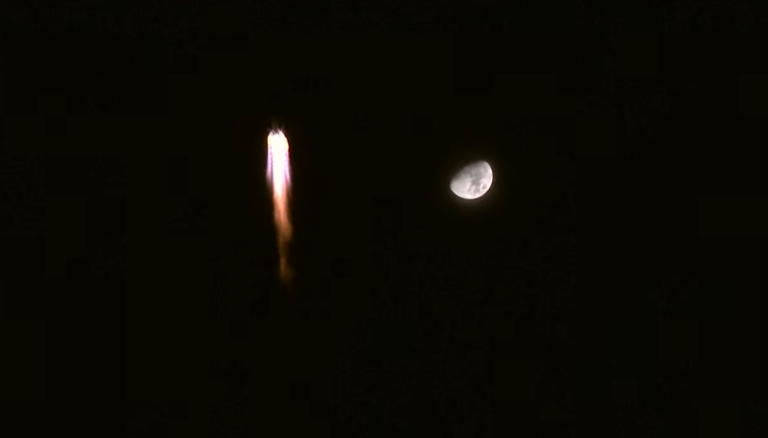HELSINKI — China’s reusable experimental spacecraft has released an unknown object into orbit during its third mission.
The U.S. Space Force’s Space Domain Awareness team has cataloged the object under the number 59884 (international identification number 2023-195G). The object, believed to be a spaceplane, was launched on December 14, 2023 and remained in orbit for 164 days. The object was likely released on May 24.
The incident was first reported by Jonathan McDowell, a space activity tracker at the Harvard-Smithsonian Center for Astrophysics, who speculated on X (formerly Twitter) that the object could be a small satellite being deployed or a piece of hardware being released before the mission ends and deorbits.
The object may also be used for approach and capture operations: during its second flight, the spaceplane performed multiple recaptures using the released object as part of on-orbit testing.
China has kept the mission closely guarded. Its space agency has not released any images or descriptions of the spacecraft, and China’s only official report of the operation was a brief one issued a few hours after the launch.
“During this period, reusability technology verification and space science experiments will be carried out as planned to provide technical support for the peaceful uses of space,” the report said.
The spacecraft is seen as China’s attempt to develop a similar capability to the X-37B and is currently on its third mission. Reusable spacecraft are a major advancement in space technology, offering the potential for reduced costs and increased mission frequency.
The Long March 2F rocket that launched the spacecraft is capable of carrying just over eight tonnes of payload to low Earth orbit, suggesting that the spacecraft may be somewhat similar in size and capabilities to the US Air Force’s X-37B spacecraft.
This idea is bolstered by images of what appears to be remnants of a payload fairing recovered from the second launch and posted on the Sina Weibo social media site, which may offer clues as to the dimensions and shape of the spacecraft.
The first flight in 2020 lasted two days, while the second, launched in 2022, will last 276 days. Both orbital visits involved the release of objects in orbit.
The gap between the spacecraft’s first and second missions (launching in 2020 and 2022, respectively) was one year and 11 months; the third mission had a seven-month turnaround.
| Mission | release date | Landing date | interval | Time since last mission | Launch site | Landing Site |
| Mission 1 | September 4, 2020 | September 6, 2020 | 2 days | N/A | Jiuquan Spaceport | Lop Nor Air Base |
| Mission 2 | August 4, 2022 | May 8, 2023 | Approximately 276 days | 1 year 11 months | Jiuquan Spaceport | Lop Nor Air Base |
| Mission 3 | December 14, 2023 | N/A | 164 days (ongoing) | 7 months 6 days | Jiuquan Spaceport | N/A |
During the third flight, the spacecraft underwent an orbital change maneuver. The spacecraft initially entered an orbit of 333 by 348 kilometers at an altitude of 50 degrees. The spacecraft then went through a series of maneuvers to raise its orbit to its current orbit of 602 by 609 kilometers, according to Space Domain Awareness data from the U.S. Space Force.
The reusable spacecraft could be an orbital segment operated in conjunction with a reusable suborbital first stage. The reusable suborbital spacecraft was first tested in 2021. The second mission was launched in August 2022. The suborbital spacecraft uses vertical takeoff and horizontal landing.
Ahead of the first launch, the spacecraft’s developer, China Aerospace Science and Technology Corporation (CASC), has announced plans to develop a fully reusable Two-Stage-To-Orbit (TSTO) space transportation system. CASC’s spaceplane project won national-level funding from the China Natural Science Foundation in 2022.
Meanwhile, the US Space Force’s X-37B spacecraft departed on its seventh mission on December 28 last year. The first to fly on a Falcon Heavy, the spacecraft was sent into a highly elliptical, highly inclined orbit at a much higher altitude than previous missions, space observers speculate. The secretive and autonomous X-37B reusable vehicle began flying in 2010.

